
TARLA Gamma Spectroscopy and Radiation Physics experimental station
TARLA Gamma Spectroscopy and Radiation Physics experimental station is found in the room C003 as shown in the picture included. Its primary purpose is the work on Gamma Spectroscopy in the foundations of nuclear physics. In addition the target station is suitable for irradiation of various samples with gamma photons for research into effects of radiation.
- Gamma Spectroscopy
Gamma spectroscopy is a technique used to study the energy and intensity of gamma rays emitted by decaying nuclei. By analyzing the gamma-ray spectra, it is possible to identify and quantify different nuclei, making it a powerful tool for applications in fundamental nuclear physics, as well as for applications. The process involves detecting gamma rays with a detector (scintillation or semiconductor) and then processing and analyzing the output signals. When combined into multi-detector arrays the analysis can provide much more information than just energy and intensity like timing, momentum, parity etc. Gamma spectroscopy is especially useful in identifying elements based on their unique gamma-ray energy signatures.
1a. Nuclear Resonance Fluorescence (NRF)
Nuclear Resonance Fluorescence is a type of photo-nuclear reaction where the energy of incoming photon is below the particle separation energy of the nuclei. In essence it is a (γ,γ’) scattering. NRF can be used to probe the nuclear structure of nuclei. By resonantly exciting nuclear states, NRF reveals specific information that can be used to determine many quantities relating to a nuclei.
At this time NRF experiments are the only feasible basic nuclear physics experiments at TARLA.
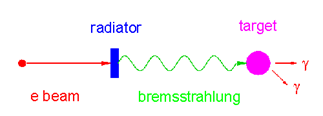
1b. Photo-Nuclear Reactions (Proton and Neutron)
Photon-nuclear reactions involve interactions where photons cause the emission of protons or neutrons from a nucleus. Here the energy of the photon has to be sufficiently high to cause a particle separation. Typically this energy is in the 10 MeV range. These reactions are ubiquitous and have implication for a wide range of fields like astrophysics, nuclear structure research, and reactor physics, nuclear dynamics and reactions as well as photon-activation analysis.
Currently performing photon-nuclear studies is not feasible at TARLA, but plans are being developed to enable such studies in the future.
1c. Photo-Fission
Photo-fission is the process by which a nucleus, upon absorbing a high-energy photon, splits into two or more fragments. For heavy nuclei, especially for long-lived but unstable ones, this energy is often lower than the single particle energy separation. This process also releases energy and is used in nuclear physics to study fission products, nuclear stability, and potential applications in nuclear energy and isotope production.
- Bremsstrahlung or “braking radiation,” occurs when a charged particle, typically an electron, is decelerated by the electric field of a nucleus, emitting photons in the process. This emission creates a continuous spectrum of X-rays or gamma rays, depending on the energy of the incoming particle. Bremsstrahlung is used in radiation physics, medical physics and imaging, as well as in generating high energy photon sources for research.
At TARLA bremsstrahlung photons will be produced by impacting 5-40 MeV elections onto a selection of metallic foils (Al, Cu, Nb and Au). At this stage TARLA gamma spectroscopy experimental station is designed for photons only thus to avoid any neutron damage to the detectors. Thus for practical application the limiting factor for energy is the neutrons separation energy of Al at ~ 13 MeV.
At the target station, the expected photon flux is around 1011 photons/(cm2 s) with a 2cm diameter of spot-size. The flux is similar to other bremsstrahlung facilities such as ELBE and S-DALINAC, but significantly stronger than Compton backscatter facilities such as HIɣS.
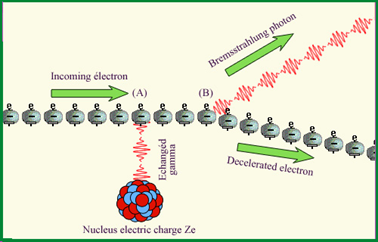
- High Purity Germanium (HPGe) Detectors
HPGe detectors are semiconductor detectors made from Germanium. They are widely used for gamma-ray spectroscopy due to their superb energy resolution. HPGe detectors operate at cryogenic temperatures due to the lower band gap of Germanium and thus have to be cooled by LN2. The downside is that they are relatively slow compared to scintillation detectors and very sensitive to neutron damage.
TARLA will use two single crystals HPGe with ~100% relative efficiency and energy resolution <2.5 keV at 1.33 MeV and <1.4 keV at 122 keV. In addition, there are two CLOVER HPGe with ~130% relative efficiency and energy resolution <2.3 keV at 1.33 MeV and <1.05 keV at 122 keV(add-back mode). All HPGe detectors are combined with Active Compton Suppression in the form of BGO detectors. The detectors will be positioned at 135o(-45o) degres with respect the beam and 90o degres to each other.
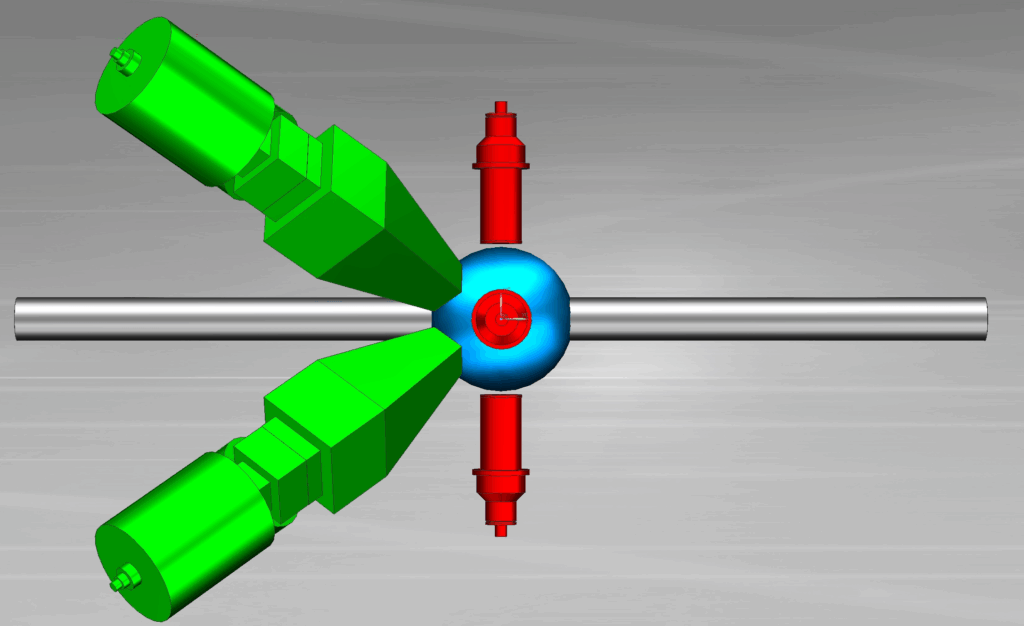
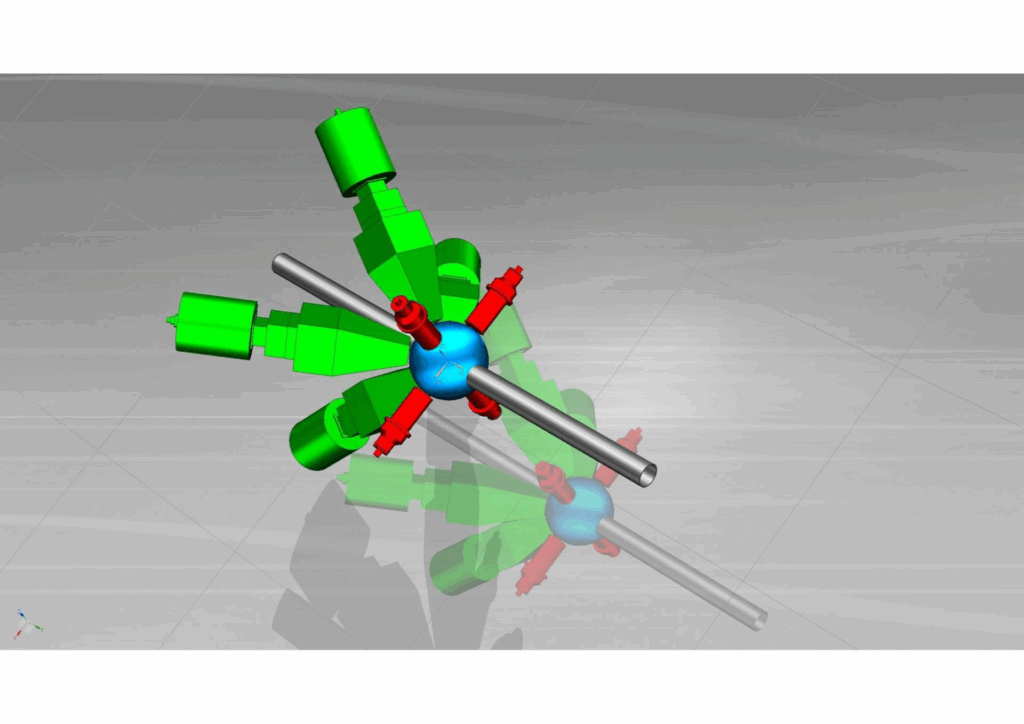
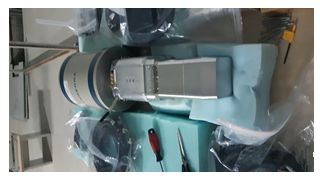
3a. High Voltage Supply (CAEN SY5527 https://www.caen.it/products/sy5527/)
The High voltage for all detectors is supplied by CAEN SY5527 which offers precise voltage control essential for the stable operation of high-resolution detectors. Reliable high-voltage power is crucial to ensure consistent performance in gamma spectroscopy and nuclear physics experiments.
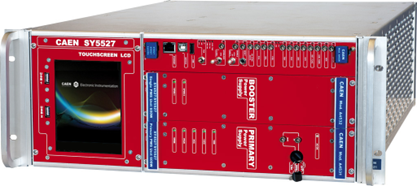
- LaBr₃(Ce) Detectors
Lanthanum Bromide doped with cerium are scintillator type detectors known for their fast response times and decent energy resolution, making them ideal for intense and time-sensitive gamma-ray
spectroscopy. LaBr₃(Ce) detectors are thus commonly used in measurements requiring high-speed data acquisition.
TARLA gamma spectroscopy setup will include 4 such detector positioned perpendicular to the beam and 90o degrees to each other.
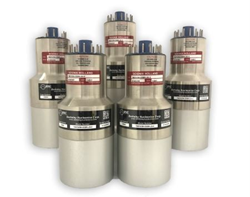
- VME Electronics
VME (Versa Module Eurocard) electronics are a standard system architecture for data acquisition and control in experimental physics. VME systems are modular, allowing integration of various components like digitizers, MCAs, and other instruments for complex experiments. This flexibility makes VME electronics suitable for managing data in high-energy physics, nuclear research, and real-time data applications.
5a. Digitizer (CAEN V1730 https://www.caen.it/products/v1730/)
The CAEN V1730 is a 16-channel digitizer used to convert analog signals from detectors into digital data for analysis. Input signals are read by a Flash ADC, 14-bit resolution and 500 MS/s sampling rate, which is well suited for mid fast signals as the ones coming from liquid or inorganic scintillators coupled to PMTs or Silicon Photomultipliers, but also for high precision detectors as Silicon or HPGe coupled with charged sensitive preamplifier.
5b. MCA (CAEN V1782 https://www.caen.it/products/v1782/)
The CAEN V1782 is a Multi-Channel Analyzer (MCA) used to analyze and count signal events, providing a histogram of energy spectra. The V1782 is the an Octal 32k digital MCA. Designed for high energy resolution semiconductor detector such as segmented HPGe, Clovers and silicon detectors.
- Bismuth-Germanium-Oxide (BGO) Detectors
BGO detectors are scintillation detectors that offer high detection efficiency and stopping power, especially for high-energy gamma rays thanks to their high density. Although BGO detectors have lower energy resolution than HPGe detectors, their high density makes them effective for gamma-ray detection in a compact form.
TARLA will use 4 BGO detectors as ACS for each of its HPGe detector.

6a. Active Compton Suppression
Active Compton Suppression(ACS) reduces background noise in gamma spectroscopy by detecting and excluding scattered gamma rays. By surrounding a primary detector with a secondary detector array, this technique enhances signal-to-noise ratios, improving the accuracy of in complex experiments.
- Photo-Activation Analysis
Photo-activation analysis is a method where a sample is irradiated with high-energy photons, causing photo-nuclear reactions. The resulting activated isotopes are then measured, allowing elemental and isotopic analysis. This technique is useful in material science, environmental studies, and nuclear forensics. By identifying specific activation products, one can analyze the elemental composition of samples without needing chemical separation.
- Radiation Physics
Radiation physics is the studies the interaction of matter and the ionizing radiation. Typically this is of the electromagnetic type implying that the energy of the radiation is below particle separation energy and that there is no chance inducing radioactivity. This field has many applications like medical treatments, agriculture, material studies and many other.
8a. Sterile Insect Technique
The Sterile Insect Technique is a pest control strategy where male insects are sterilized using radiation before release. This method reduces pest populations over time as sterile males mate with females without producing offspring, minimizing reliance on pesticides and supporting sustainable agriculture.
8b. Radiation-Induced Mutation (Accelerated Breeding)
Radiation-induced mutation, or accelerated breeding, involves exposing plants or animals to controlled radiation to induce genetic mutations. This technique accelerates the development of desirable traits like disease resistance or increased yield, contributing to food security and agricultural innovation.
8c. Food and Foodstuffs Irradiation
Food irradiation uses ionizing radiation to sterilize or preserve food, extending shelf life by killing bacteria, parasites, and pests. This process is widely used for spices, fruits, and meats, providing a safe method of food preservation approved by many international health agencies.
8d. Radiation Resistance Testing
Radiation resistance testing assesses a material’s ability to withstand exposure to ionizing radiation. This testing is essential for materials used in nuclear reactors, space components, and medical devices, ensuring they can endure harsh radiation environments without degradation.
 Turkish Accelerator and Radiation Laboratory (TARLA) Think Future, Think TARLA
Turkish Accelerator and Radiation Laboratory (TARLA) Think Future, Think TARLA